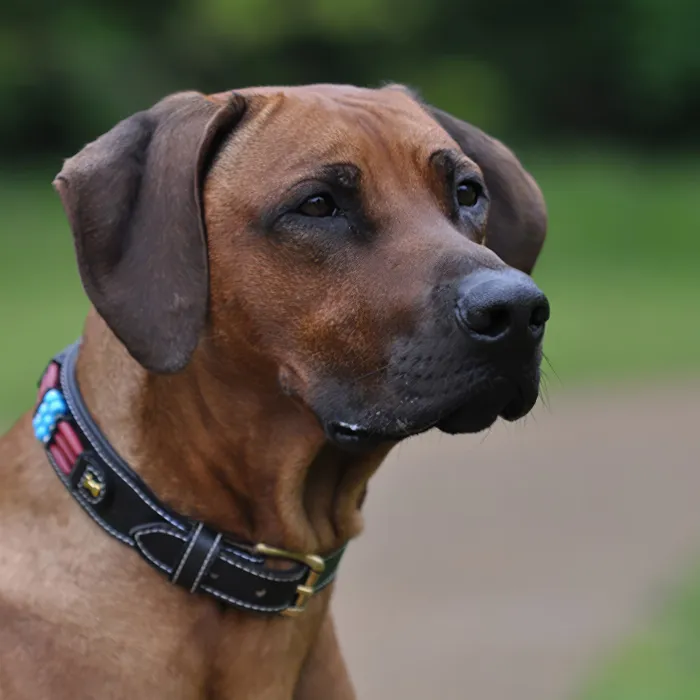Introduction
As I've already written, I read a lot myself and always see animal magazines and books as a "photographer" - so it's not just the writing part that's interesting, but also the pictures that are included in these readings. How often do I think: "Oh, that's an interesting way of approaching the subject! I must try that out myself." I'm sure you often feel the same way. I hope that you often experience this effect with the pictures in this tutorial and that I can give you one or two new tips. Of course, I am primarily passing on my own personal taste, but I am also trying to pass on some points of criticism and other preferences of my customers and friends. I hope you enjoy reading the tutorial!
Please note that in the other tutorials I will go into more detail about the equipment, camera settings and, above all, sharpness & co. I would therefore ask you to refer to the other tutorials if you are looking for more information here. All the shots you see here were taken with a Nikon D90 and fast lenses (2.8) with focal lengths of 18-200 mm.
At the moment I use a 24-70mm lens for studio shots and a 70-200mm for most outdoor shots. Of course, I'm always saving up for better equipment, so the existing "treasure" changes regularly. I have added the image information to many of the photos. Again, I like to say that this tutorial is communicated through the photos themselves, so I've avoided a lot of text and instead let a variety of images and the respective camera settings do the talking.
Content:
- Distance to the subject and position of the photographer
- Detail shots and cropping
- Setting the scene correctly (bull terrier chunky etc.)
This beautiful Russian Blue posed on a low living room table. Here I photographed her in a crouching position.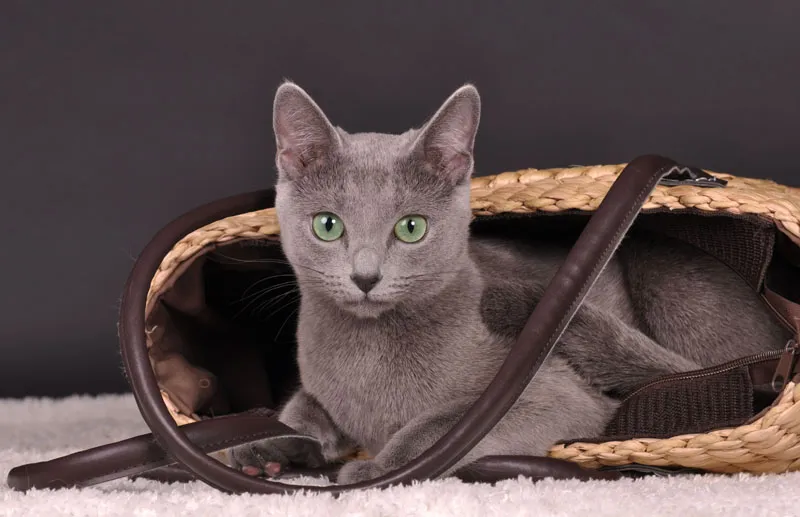
Even though I would like to encourage you to try different things in this tutorial, I would like to go back to a point that makes most private photos look unattractive. Every picture looks much more professional (especially dogs and cats) if you photograph the animal from eye level. Have a look around forums or similar where private people show photos of their pets, or simply ask friends to show you photos.
The photos are almost ALWAYS taken from above. For fun, I once looked at older photos of myself. The same mistake in every photo. Of course, we also tend to do this because most animals, especially our own, immediately rush out to greet us when we lie down on the ground. Nevertheless. Give it a try. Believe me, you'll get 80% more out of your photos with this alone.
The next trick is to get the animal to look directly into the camera, like the mouse above. This is anything but easy, but the animal doesn't always HAVE to look directly at the camera. That's nonsense, but of course it works.
1. distance to the subject and position of the photographer
In addition to playing with the Blender, the right distance is of course also important in photography. One photographer wants to take a portrait of the horse and approaches his subject "close" to achieve the right angle, for example, if he wants to photograph the subject slightly from above or below. Someone else may want to emphasize the beautiful, wide landscape on which a horse is standing picturesquely.
He will choose a correspondingly wide section. Of course, your position depends not only on what you want to photograph, but also on the focal length you want to work with or that is available to you. So if you are photographing a dog sitting on a stone and you are using a telephoto lens, it is clear that you need to move further away. Of course, this also affects the depth of field accordingly. You should therefore know what you want to achieve.
As already mentioned in some tutorials, you can't just shoot your model straight on or at eye level, but from many different angles, and that's what makes the difference. Experiment. Photograph your subject slightly from above or from below.
Get yourself at eye level, regardless of whether you have to climb onto a horse's hump or lie flat on the ground. Always think about your safety, but otherwise there are no limits to your imagination.
To give you a few examples, I have brought a few photos with me and will tell you a bit about the circumstances in each case:
Little Emma lay down on the grass in the shoot and I did the same. But at a distance, as I was using the telephoto lens. I chose a focal length of 200 mm. I photograph small dogs or cats almost exclusively at eye level, i.e. lying on the ground.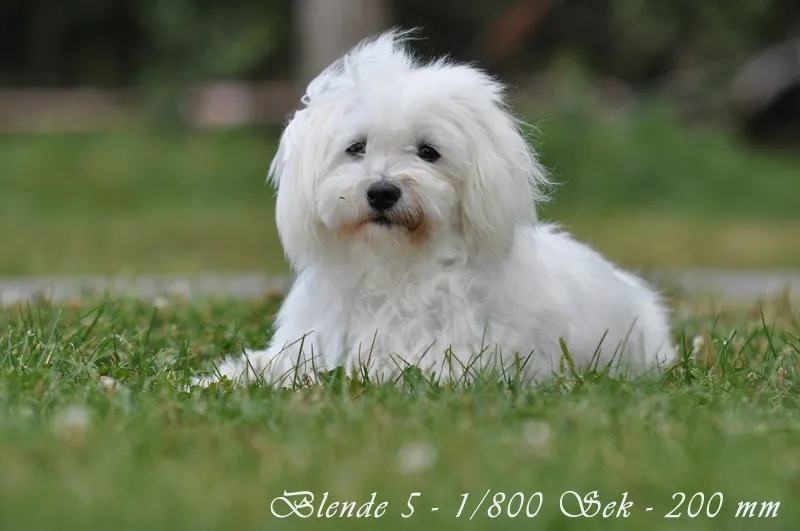
A similar situation in the studio. The beautiful Rhodesian Ridgeback male Chernuk is lying in a cozy pose. I have brought myself back to eye level.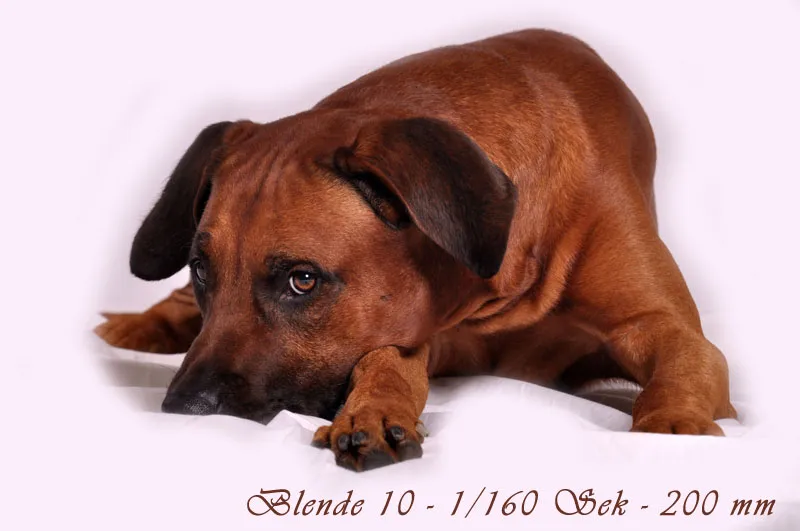
The RR bitch Tinka has also settled down on the floor in the studio. Here I had to photograph from a crouching position to be at eye level.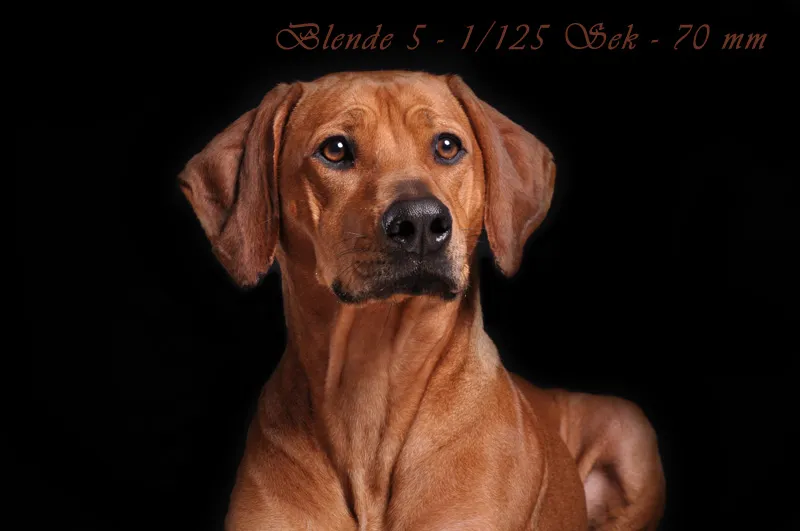
I brought the pretty, somewhat older dog back with me because she is a good example of a shot from above.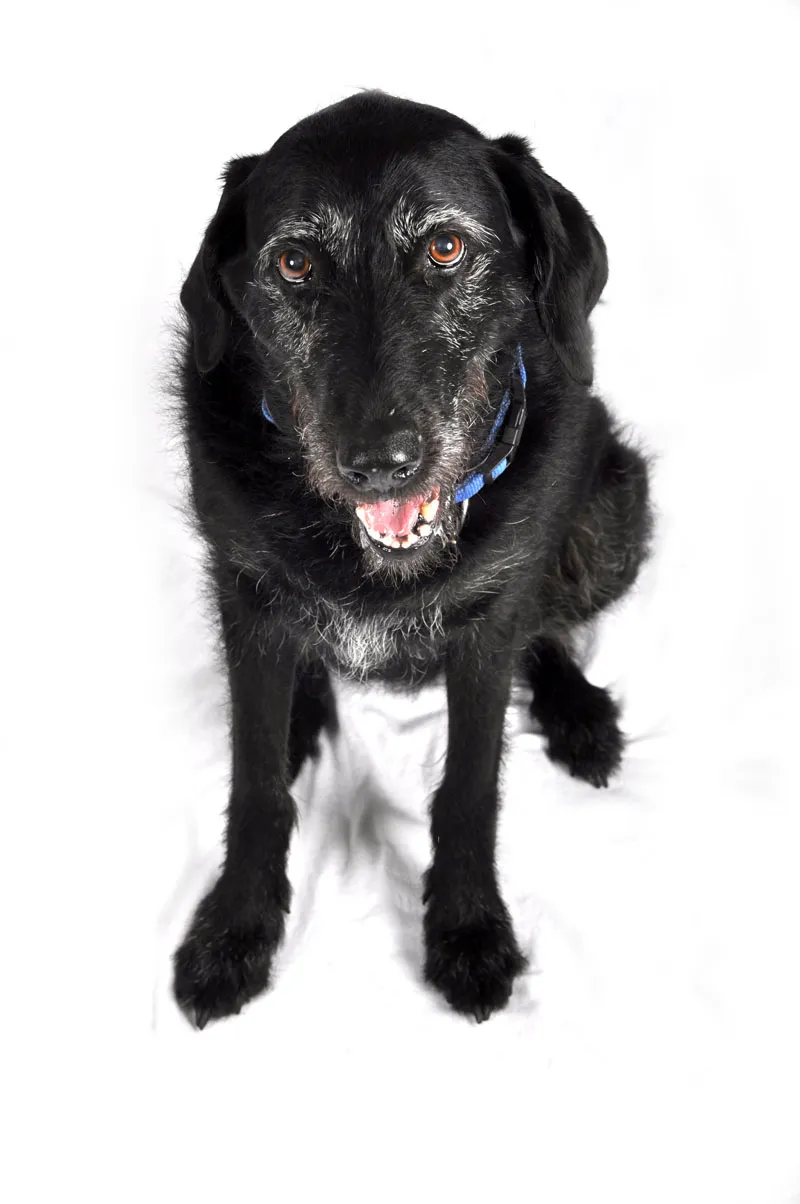
The little whirlwind Santana here was to be enjoyed with caution. A 78 mm focal length was actually too dangerous. She came to me several times in the middle and tried to strike out. With small wild horses like this mouse here, I now prefer to play it safe and choose a longer focal length. 200-300 is ideal; if possible, there can be a fence between the model and photographer.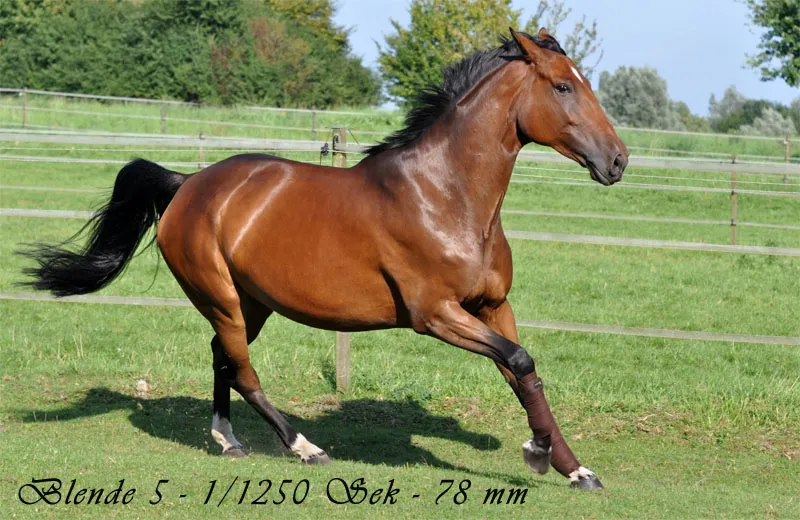
For large horses in the studio, it can also be a little hump. I am only 1.60 m tall. So it can often be a bit tight.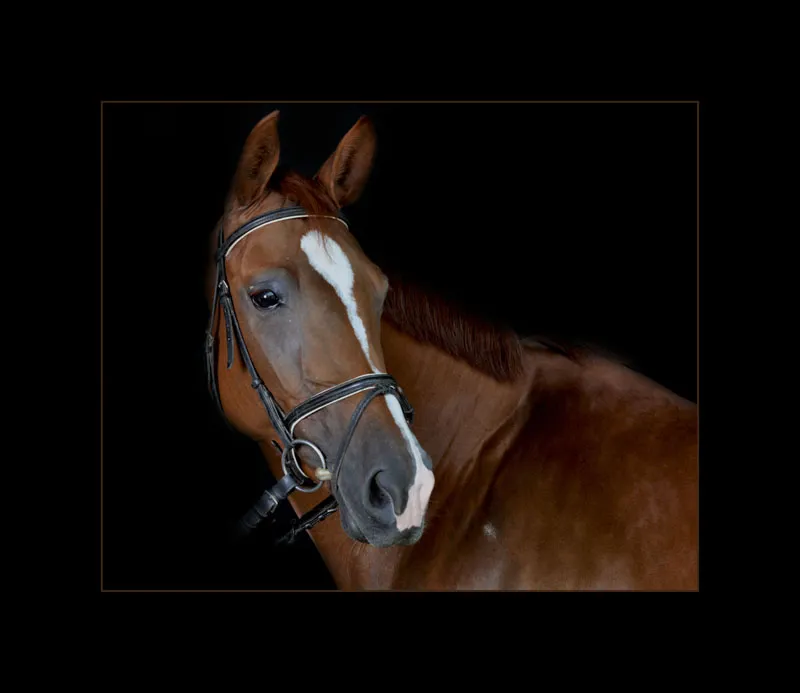
Here I have simply photographed the pretty mongrel from below. I lay down flat on the floor and looked for the lowest possible point to release the camera. The two dogs on this shoot were so well behaved that I just wanted to try something different.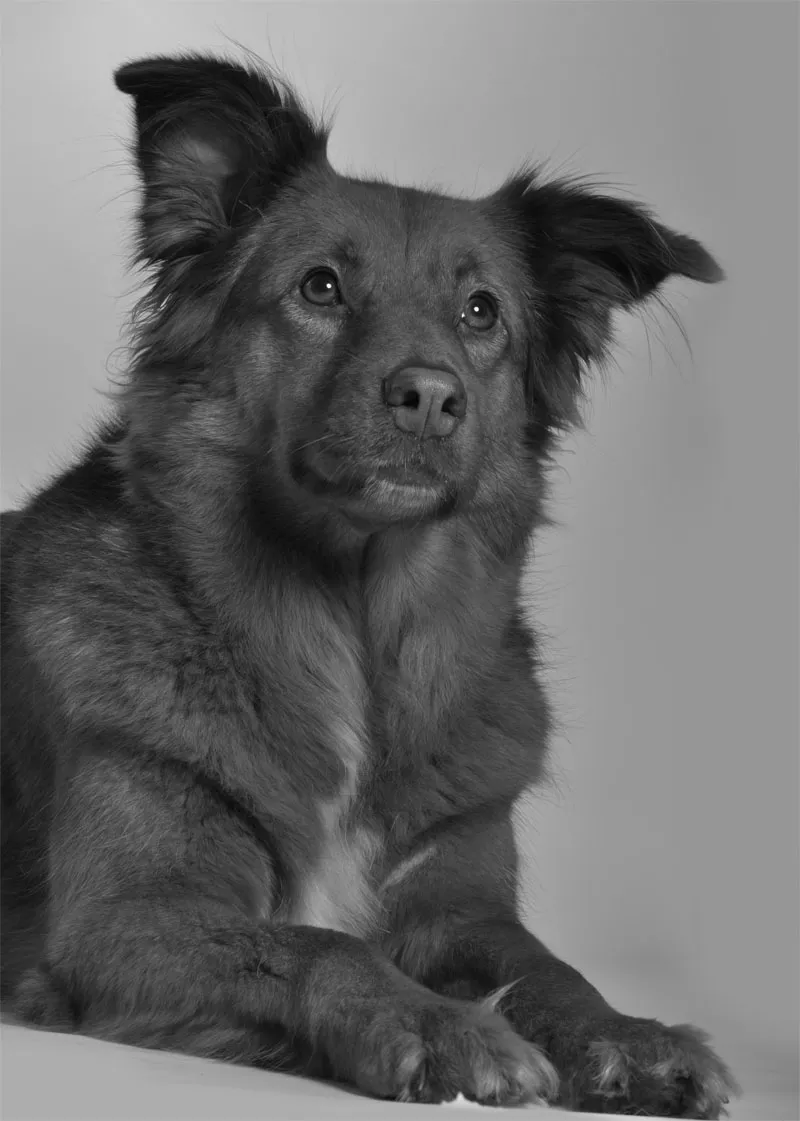
2. detail shots and cut-outs
In my opinion, almost everything on a four-legged friend is suitable for detail shots, even if this type of picture is often looked down upon. I love them! Paws, eyes, special features ... Why not capture them in a special way? Dedicate a photo to them? I have already photographed "almost" everything on my four-legged friend in detail. Of course, I admit that I haven't always achieved the desired result.
For example, I'm photographing a Dalmatian and I get the idea of simply capturing a few very special fur drawings. I've rarely succeeded, maybe I just don't have the talent! Who knows? Apart from that, I like all kinds of details around the eye. Customers keep asking for them and want shots like this. So if you're photographing an animal, whether in the studio or outdoors, you have to come up with some ideas. In order not to always photograph the animal in the same way, you may have to pull out all the stops and reposition the animal and yourself again and again. Well, put yourself first, if possible.
You should reposition the animal as little as possible. You need to get into the habit of always choosing the right background and having it under control from all possible perspectives. You need to see a background and your animal, so to speak, and think about how best to combine the two. After all, you can not only use the focal length to change the proximity to the subject, you can also take pictures from below or above to create a different atmosphere in the picture, but also change your lateral position. So if you photograph a horse from a little further down, you may end up with a completely blue background. As already described under Position of the photographer, you have many options and must therefore also choose the background according to this aspect. In the studio, you are usually somewhat more limited.
But here again: change your position and simply change the focus points! I recently saw a photo on a well-known dog magazine. On the front page, mind you. What was in focus in the photo of a Weimaraner? The nose! And why not? It fits after all!
But now I would like to show you a few more pictures to demonstrate which detail shots and sections and points of focus could be interesting:
Mare Fleur neighs. That's why I focused on her mouth area in this shot. Just something different ... Do you like it? I do! I like such "strange" details.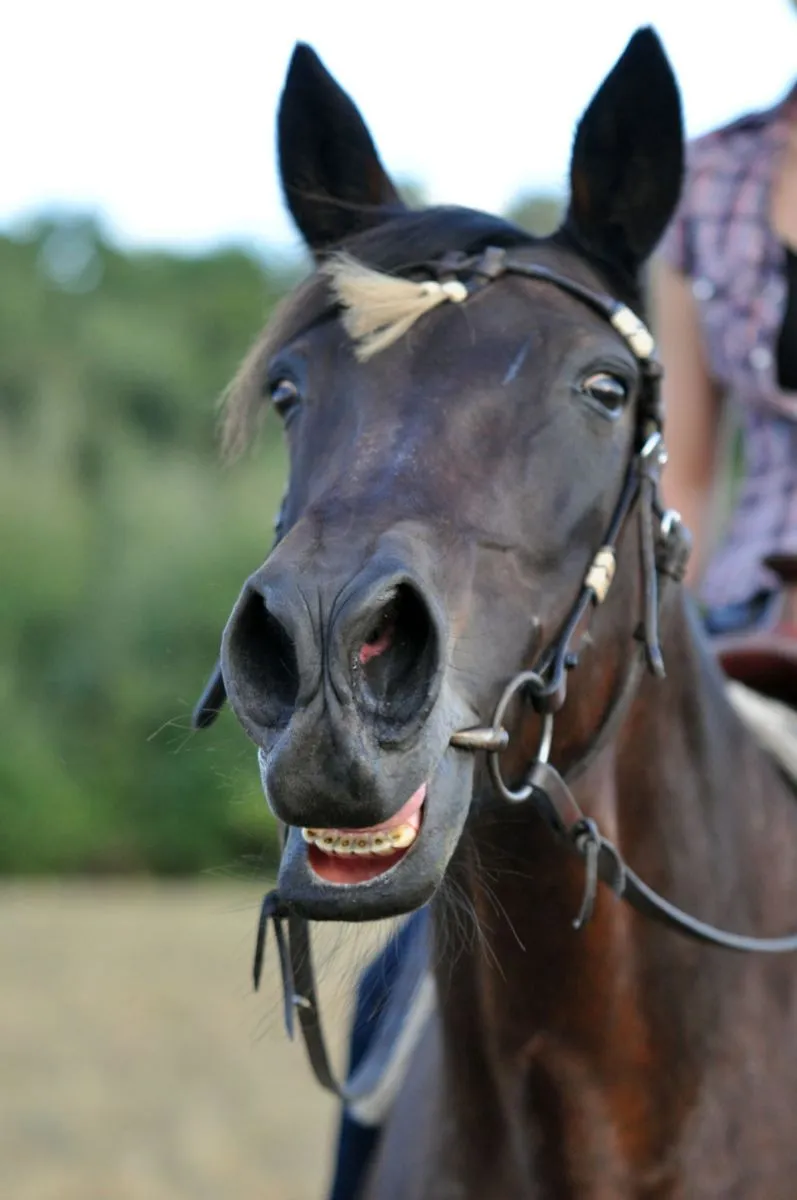
Here is our Shire Horse Jonathan before he starts to drink.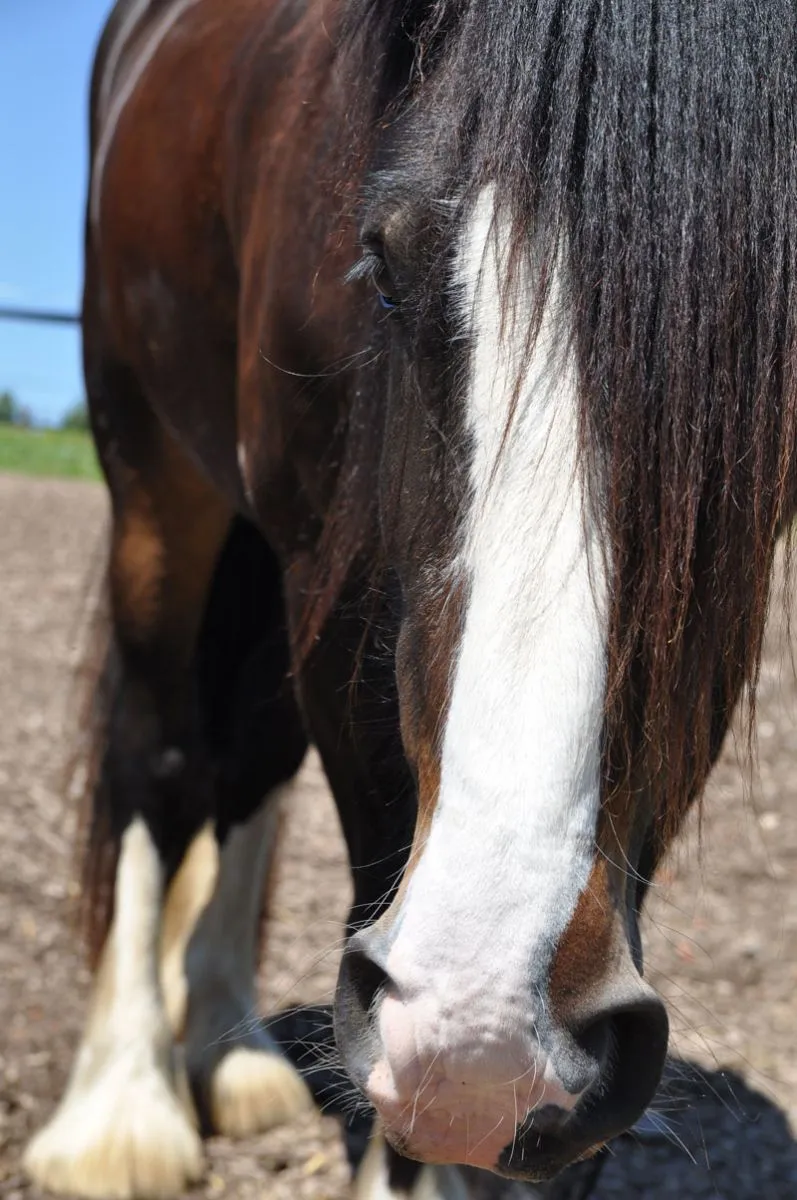
And I'd also like to post this picture of Jonathan again. Because it is one of my most beautiful photos of him.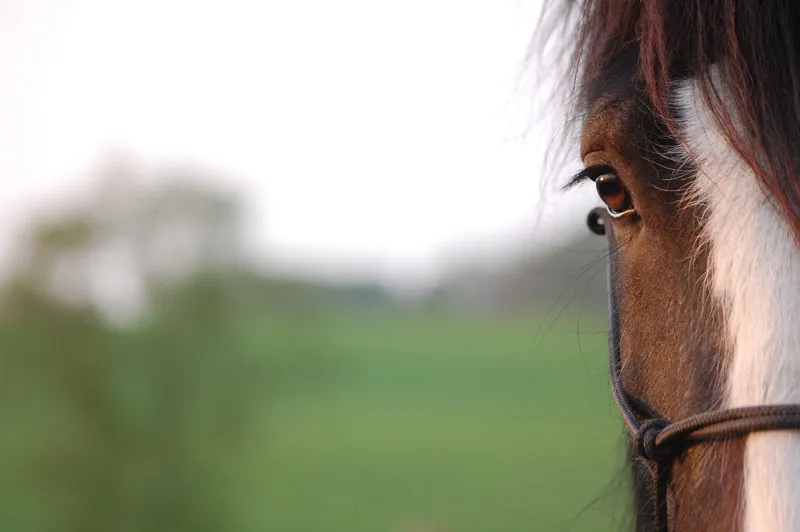
If you like eye or face shots, you should always try to take photos like this. The eyes of this Siberian husky are definitely worth their own shot.
And the same motif from a different angle. The ears can also be cropped. Just as with humans, you can crop the forehead and take a limited photo of the face.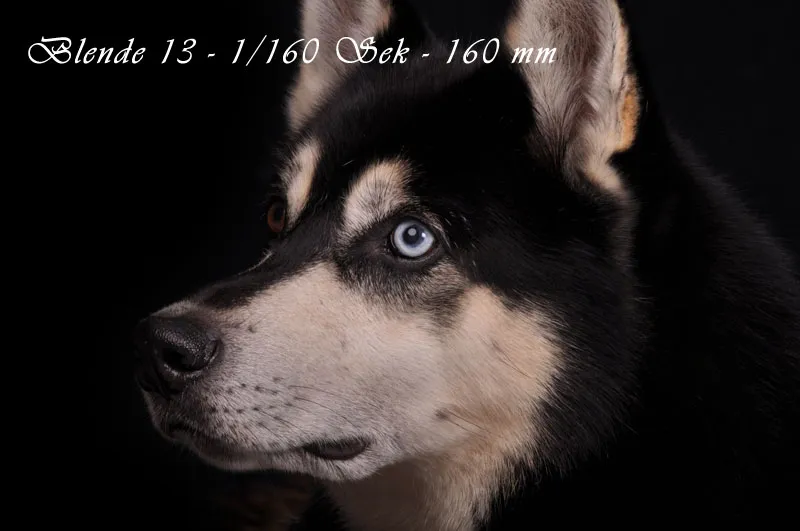
It is particularly difficult to take eye shots of cats. They usually don't hold still enough or they tend to relax too much and start to squint their eyes. However, the pretty Maine Coon Shikisha here did me a favor and held still for a bit. Her breeder forgave me for the section of precious brush ears; these close-ups were even expressly requested.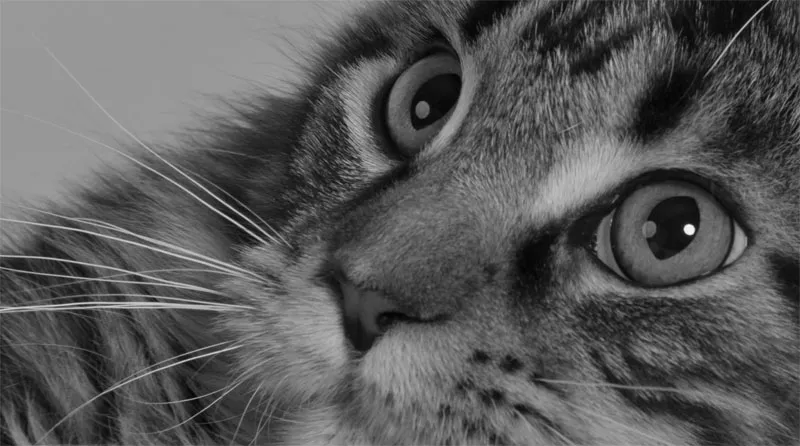
The British Longhair cat Kiwi was wonderful to photograph on her terrace. Not only did we succeed in taking this beautiful face shot, ...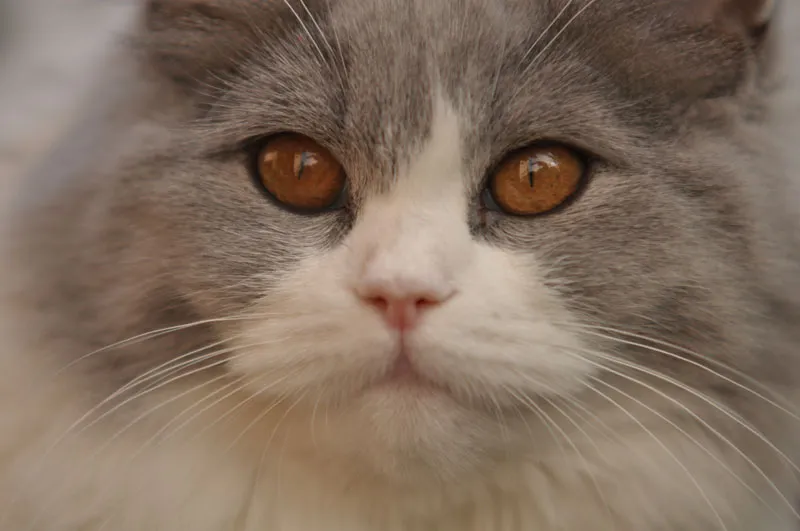
... but also the following side portrait.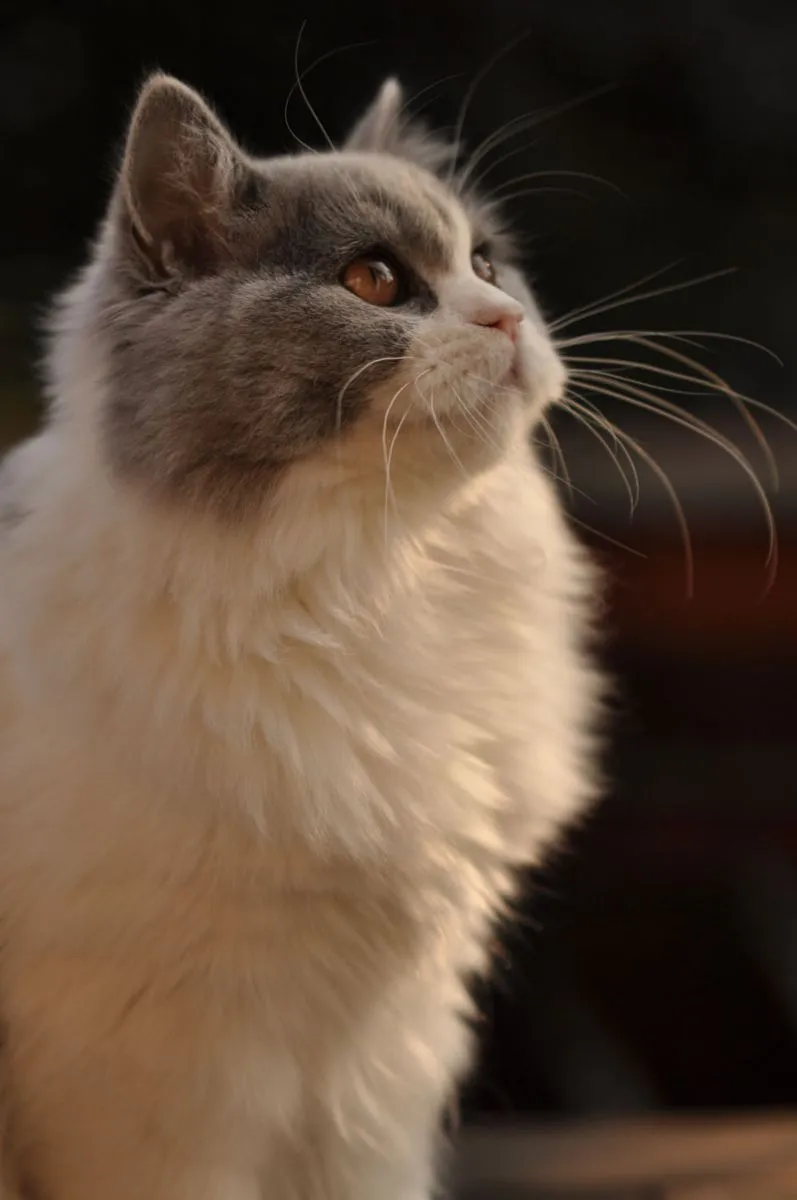
3. setting the scene correctly
To get the "right" shot of an animal, you can of course also get a lot out of it by cropping and positioning it correctly. Especially if you are photographing a breeder's animals, for example, you should make sure that you tease out important breed characteristics from your models and that they come across well, and you can emphasize this by choosing the right angle for the shot.
And even if you are photographing for a private individual and of course want to achieve what every pet photographer wants: that the pet owner says after the shoot when looking at the pictures: "Yes, that's typical of my darling." Here, too, it doesn't hurt to capture very special features of the animal. Talk to the two-legged friends a lot about their pets and ask questions! How old is the animal, what character does it have, what does it like to do, what is typical of your pet?
Irish terriers are funny fellows who like to romp around. Perfect for an outdoor shoot. In pairs, you can even do it without any human animation. All you have to do is point and shoot.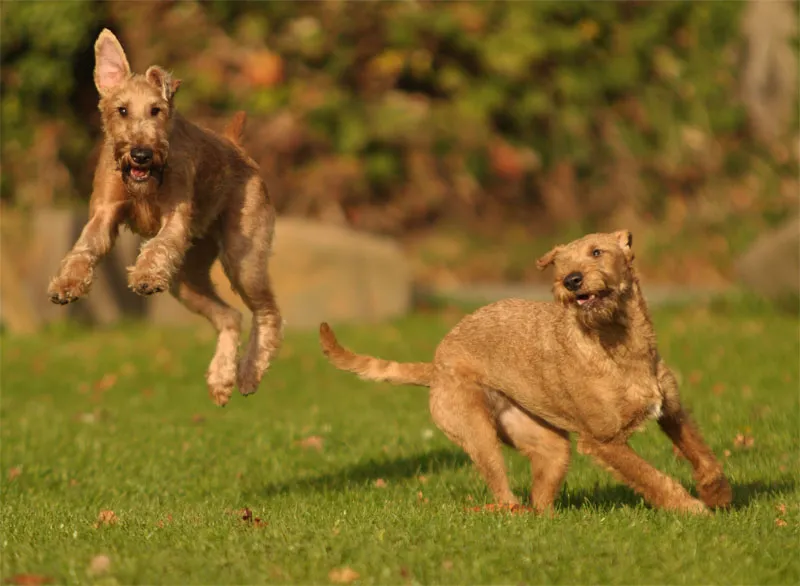
Abby, the young English bulldog, is a real powerhouse. Even if the picture doesn't reflect her true character, it's still a typical bulldog pose.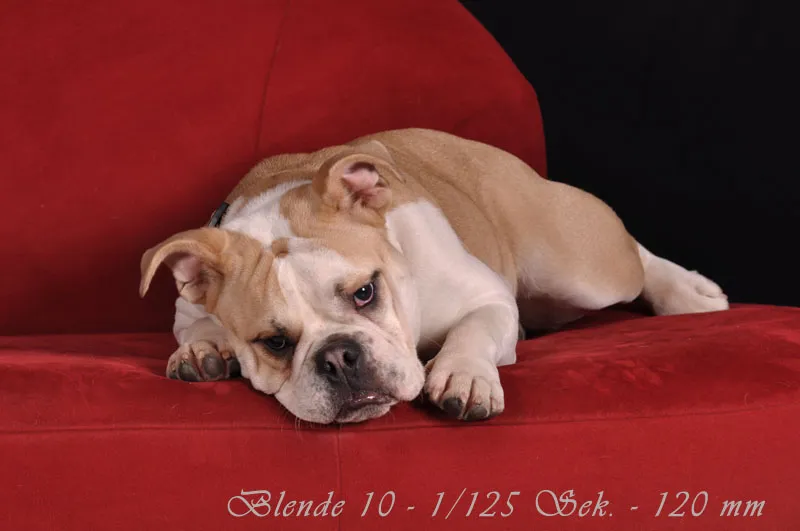
Originally used as a guard dog, the Great Dane is nowadays more of a gentle giant, but she can still come out BIG and STRONG. Gelato is a huge cuddler, but it can still make you feel uneasy when these big animals come running up to you.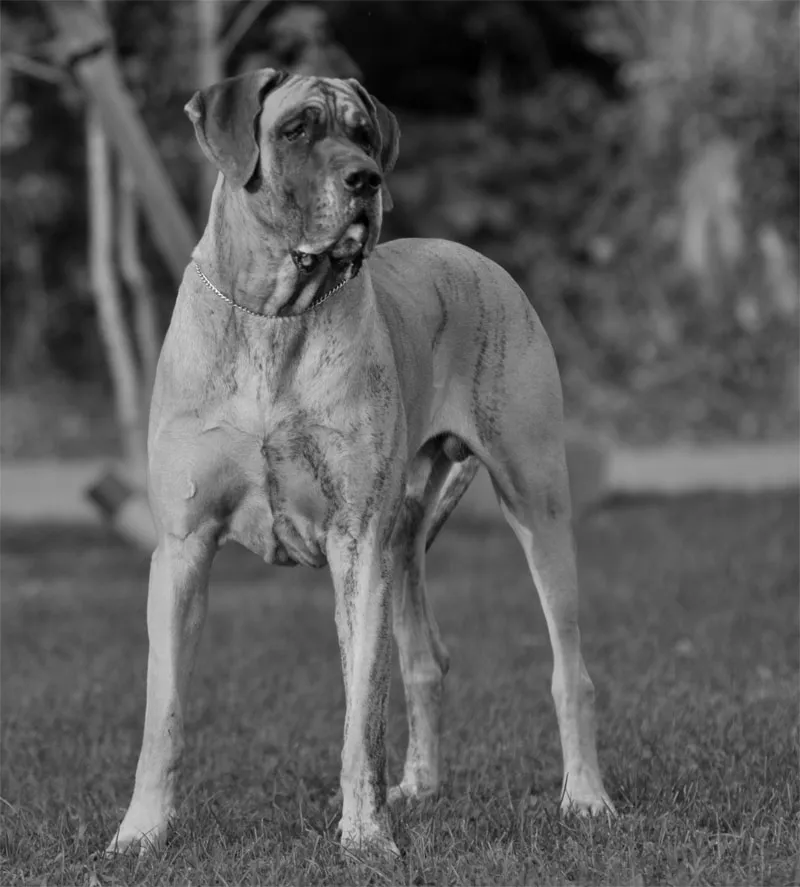
Puppies are easy to photograph and they always look clumsy and cute, no matter what they are up to.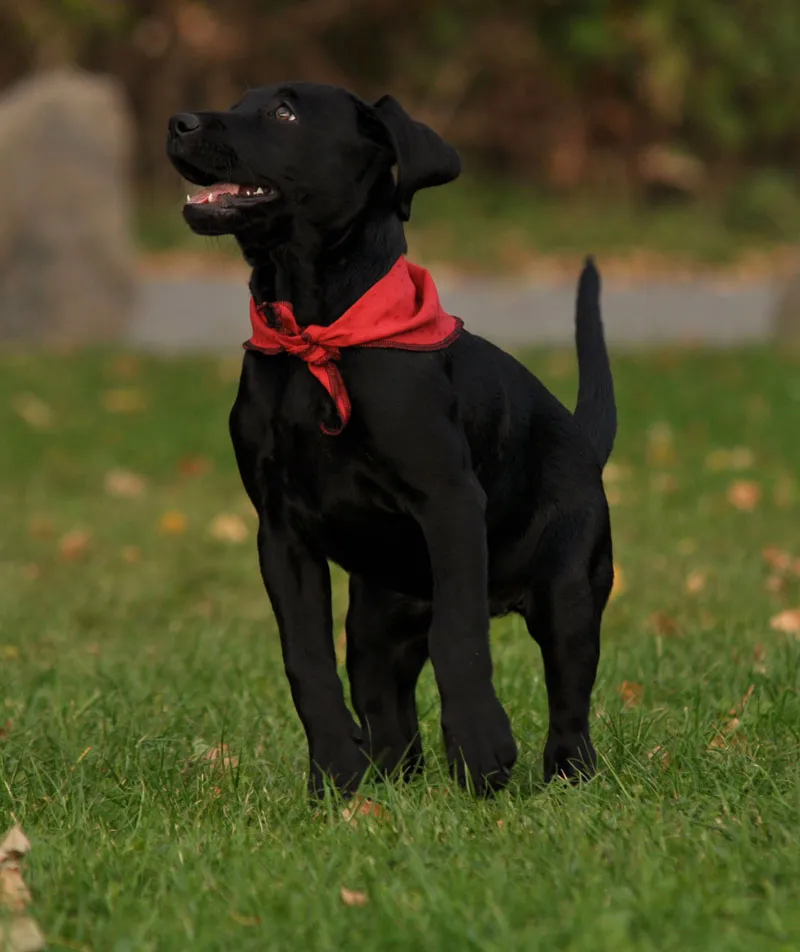
The little Labrador girl Sari here is trying out what leaves taste like and at the same time trying to sneak away unnoticed. Animal children infect everyone with their cheerfulness and light-heartedness. It's simply wonderful.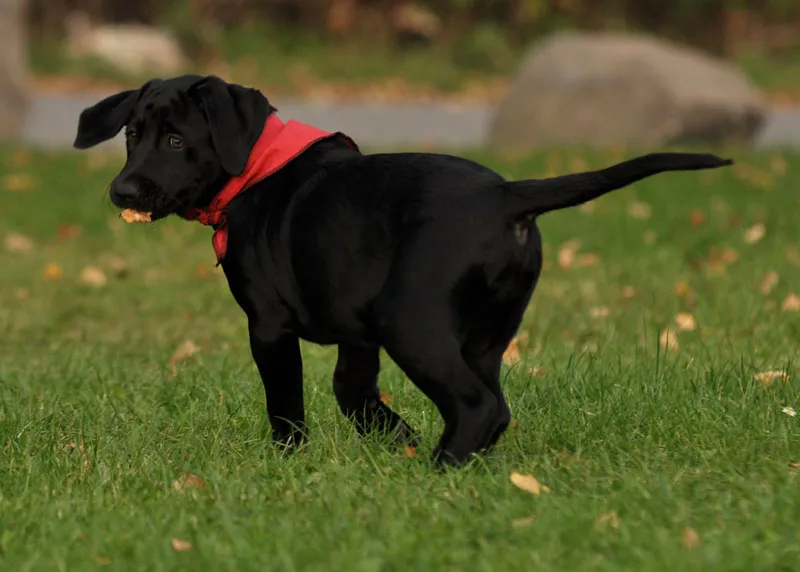
Again the Rhodesian Ridgeback bitch Tinka. These big "lion slayers" are an incredibly proud and beautiful breed of dog. Although often reserved towards strangers, they are almost always relaxed and balanced in the studio. They almost always show this typical Ridgeback stance, and it's always nice for a photo!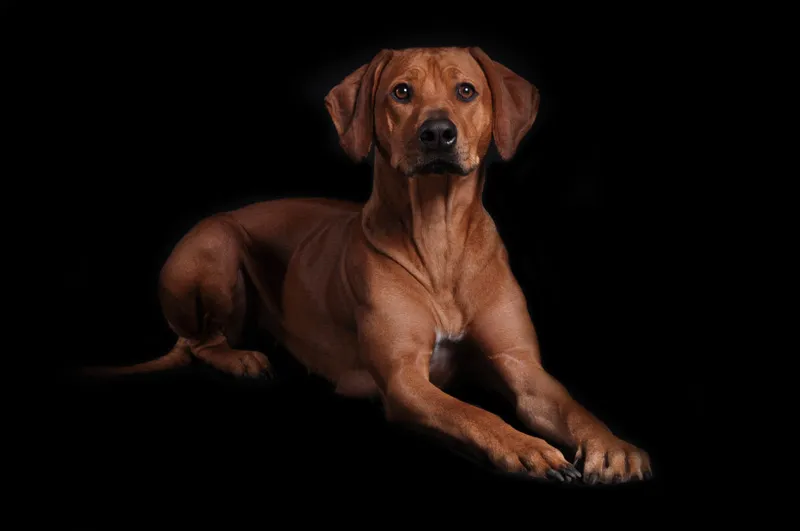
No matter what you are photographing: The more often you move through the world with your camera, the more you learn to see your subjects with your heart, with the eye of your camera. You start to experiment. And yes, every photographer throws most of their pictures into a pile later on, which they dismiss as unusable. No matter whether you are a hobby photographer or a professional photographer.
The ratio is slightly different, but if you learn to put yourself in the shoes of your subjects and learn something about models, then sooner or later you will see for yourself what is important and what is not. Many animals offer all by themselves, which you should never refuse. Take advantage of it, even if it is not at all what you had in mind.
So if you get the next four-legged friend in front of your lens, test it out a little. The best way to do this is with a telephoto lens, as you can play around fantastically and choose good sections that are not possible with short focal lengths without getting too close to the animal. Photograph it from different angles. Photograph it while it is doing its favorite activity, which you may be able to use to capture it in a particularly positive way.
As I said at the beginning, this tutorial consists of just a few words and a few pictures, which I hope will give you some inspiration as to what you can do with your models to show them in a slightly different light from time to time.
Finally, I would like to tell you a story about Maja, a dog from Moldova that I photographed a few weeks ago. It's a perfect example of how unpredictable things sometimes happen and how animals unconsciously make offers to us that we should accept. Don't forget: be patient, spontaneous and always put your heart into it!
Now to Maya's story:
Again and again, through my work, I get to know many animals from animal welfare who were lucky enough to find loving people who invest all their love to give the animals confidence again and patiently build them up emotionally. Certainly not always, but very often these dogs from animal shelters or from abroad are incredible creatures that always touch me deeply.
They are usually very submissive, completely defensive, and yet they seek to be close to people even though they have so often had bad experiences with them. Within minutes, you fall under their charm and want to take them home with you and only let them feel good. Simply wipe away the fear and caution in her eyes. And that's how I got to know Maya, who touched me more than any other dog ever had. She had only been with her owner here in Germany for a week, she had been placed with a foster family and originally came to Germany from very poor conditions in Moldova.
She was enchanting. She was reserved and cautious, and yet she came to me straight away and wanted to be cuddled and cuddled everywhere. She was simply terrific, so loving, so thoroughly reserved and sweet. The owner had fallen in love with Maya from the photo and had picked her up. Maya got on with everything, children, cats, she was a dream dog. She touched me and I still wish I could find a dog like Maya.
And she did something really funny during our shoot, which is why I'm telling you about it. Maya lay down on a piece of jute fabric that we had placed on the photo card. She lay on her back and wanted to be cuddled. Not what we actually wanted to photograph, of course, but as soon as her owner wanted to sit her in a different position, she lay down on her back and offered her belly to be stroked.
At some point, Maya took advantage of a moment when we were probably busy with ourselves and stood up. She went to the corner where my decorative mounts were and lay down in a crate that is actually intended for small dogs. She had just chosen the crate to be photographed in. So we simply carried Maya with the crate onto the photo cardboard and photographed her that way. She felt so comfortable in it that she even fell asleep in it. So she unconsciously offered me something that I immediately took up.
Simply wonderful. Little Maya ... a dream on four paws. And that's exactly why I love photographing animals, because they can give us so much. Every day!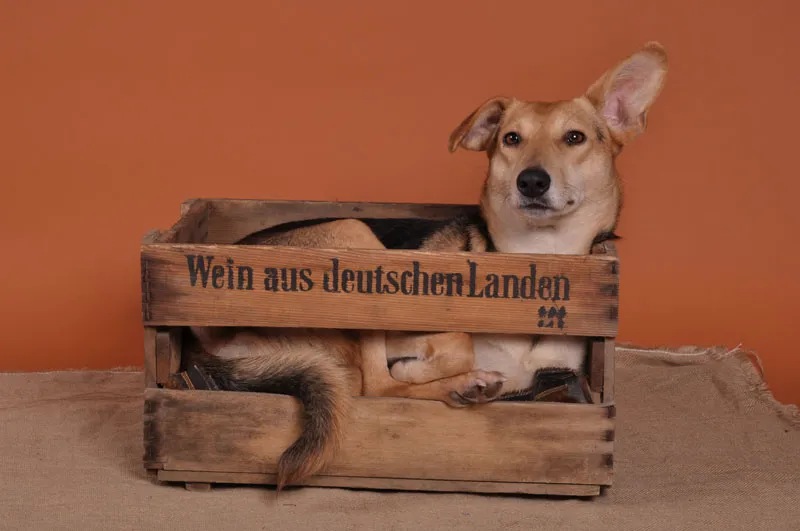
Nicole Schick
www.tierfotografie-mit-herz.de
